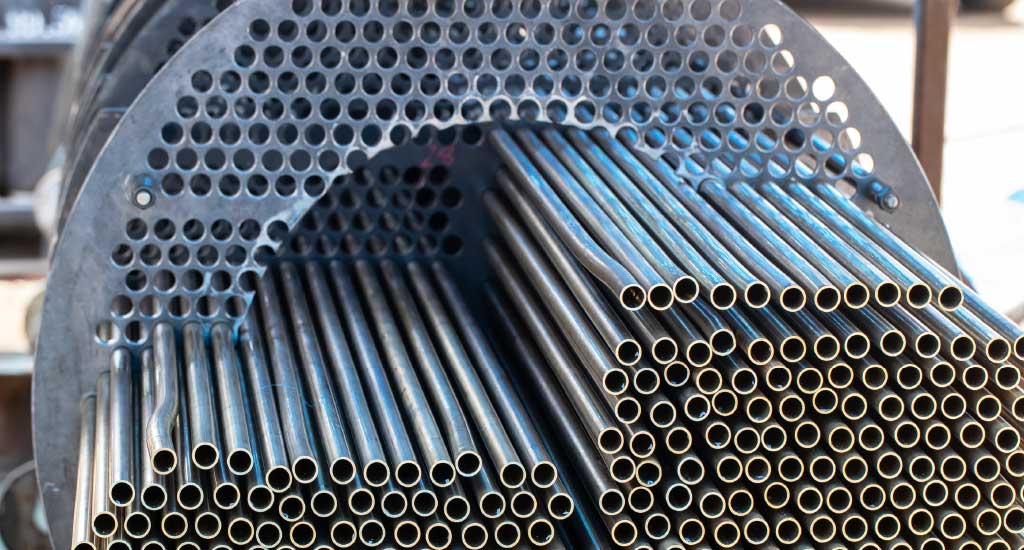Heat exchanger tubes and tube sheets are two of the most critical parts of a heat exchanger. They are in charge of transporting heat between two fluids, and a good connection between them is required for the heat exchanger to operate well.
There are two primary ways to attach heat exchanger tubes to tube sheets: welding and expansion. Welding is the more traditional approach, although it is both time-consuming and costly. Expansion is a modern method that is faster and more cost-effective, but it is not appropriate for all applications.
Welding
Welding is a permanent connecting process that forms a strong link between the heat exchanger tube and the tube sheet. There are two types of welding commonly utilized for this purpose: arc welding and TIG welding.
Arc welding is the most common type of welding used for heat exchanger tube to tube sheet connections. It is a fast and efficient process, but it can be difficult to get a consistent weld quality.
TIG welding is a slower process, but it produces a higher quality weld.
Expansion
Expansion is a quick and cost-effective mechanical method for attaching heat exchanger tubes to tube sheets. It involves using a tool to expand the end of the heat exchanger tube so that it fits firmly into the hole in the sheet. This produces a leak-proof and pressure-resistant seal between the tube and the tube sheet. However, it is not appropriate for every application. For example, expansion is not suggested for heat exchangers that operate at high pressures or temperatures.
Strength expansion joints are intended to withstand strong pulling forces by depending on plastic deformation at the tube end. They are appropriate for applications with low design pressure (≤ 4 MPa) and design temperature (≤ 300℃), and where there is no severe vibration, considerable temperature difference, or visible stress corrosion.
Strength welding joints are the most common type of tube-to-sheet connection. They have great strength and can be repaired if necessary, however they are unsuitable for applications involving strong vibration or gap corrosion.
Combination
Combination expansion-welding joints are utilized when a high level of sealing performance is required, or when the joint must endure extreme vibration or other difficult conditions. There are two primary types of combination joints: expansion-before-welding and expansion-after-welding.
Explosive expansion is a sort of strength expansion in which a high-pressure gas shock wave forces the tube end into the tube hole. It works particularly well with thin-walled tubes, small-diameter tubes, and thick tube plates.
Explosive expansion is a specialized sort of strength expansion that is particularly well-suited for thin-walled tubes, tubes with tiny diameters, and thick tube plates.
When selecting a tube-to-tubesheet connection method, consider the following factors:
Design pressure and temperature
Operating conditions (vibration, temperature swings, corrosion)
Required level of sealing performance
Ease of maintenance and repair
Best Practices
Regardless of the connection method you use, there are a few recommended practices that you should follow to ensure a good connection between the heat exchanger tube and the tube sheet:
Prepare the surfaces properly. Before connecting the heat exchanger tube and tube sheet, ensure that the surfaces are clean and clear of dirt. This will help to ensure a strong adhesion between the two surfaces.
Use proper tools and equipment. Make sure to utilize the appropriate tools and equipment for the job. This includes utilizing the appropriate sized expander tool or welding equipment.
Follow the manufacturer’s directions. Make sure you follow the manufacturer’s directions for the connection method you use. This will help to guarantee that the connection is completed appropriately.
Inspection
Once the connection has been formed, it is critical to inspect it to ensure it is secure. This can be accomplished visually or using non-destructive testing (NDT) techniques such as ultrasonic testing.
Following these best practices will ensure that your heat exchanger’s tubes and tube sheets are properly linked. This will assist to guarantee that your heat exchanger operates efficiently and reliably for many years to come.
Conclusion
Newzel Industries can engineer modular substations. Our Structural Engineers can design offshore container modules, skid packages, cargo baskets, steel structural frames, lifting studies of offshore structures, and more for clients in the Middle East, including the UAE, Oman, Qatar, Saudi Arabia, and Kuwait, for the petrochemical, power, and oil and gas industries. We also provide trustworthy offshore and onshore structure design in accordance with D.N.V. 2.7.1, and we specialize in structural design, engineering, and analysis for the industrial, offshore, and oil and gas industries.


